LED vs HPS Grow Light: Which Is Better for You in 2024

Welcome to our ultimate LED vs HPS grow light comparison guide.
In this guide, we’ll explore:
- Light intensity
- Adjustable spectra
- Energy savings calculations
- Total cost projections
- And more, to empower your decision.
So, which grow light technology will power the future of your indoor farm?
Let’s find out.
TL;DR Summary
Light Intensity, Distribution, and Coverage
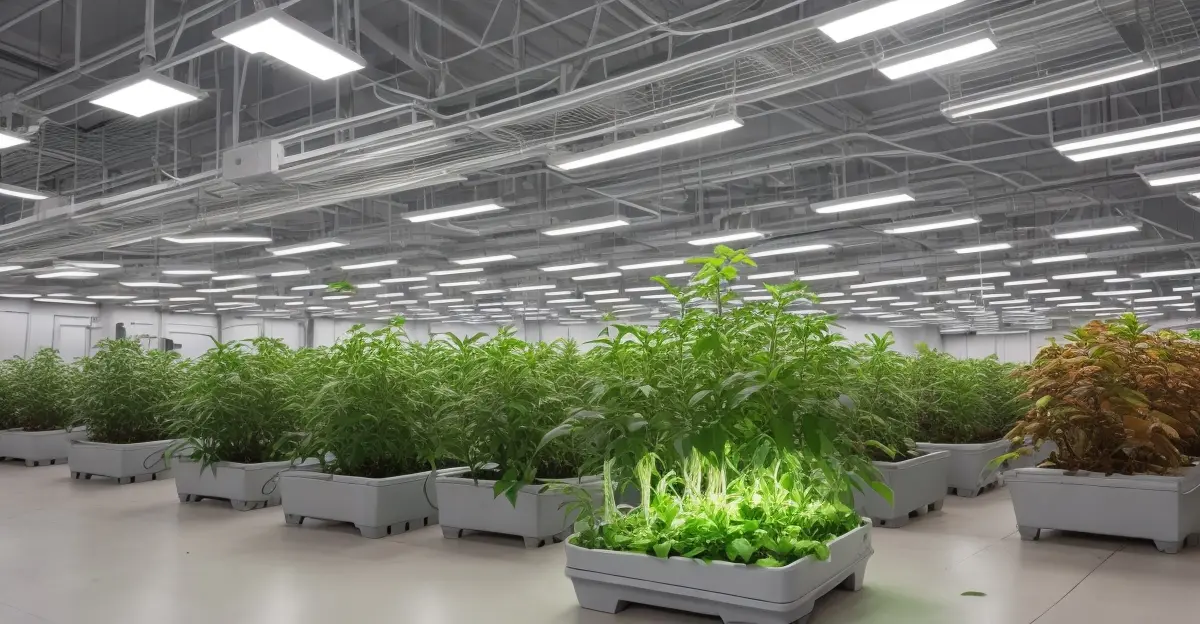
HPS fixtures emit very intense light.
This can accelerate growth in the vegetative stage when plants are shorter and concentrated near the lights. However, too much intensity stresses plants and reduces bud density over time.
LED grow lights provide more focused, directional beams instead of diffuse area lighting.
So, with poor positioning, the intense LED spotlight effect can create uneven growth zones in your canopy.
But here’s the awesome part — adjustable LED panels allow positioning extremely close to the top canopy without leaf burn.
This takes full advantage of the directional beams to penetrate deep into the lower plant sites with less light decay.
When it comes to raw canopy penetration ability from light intensity, HPS historically won out.
But today’s optimized multi-layer LED fixtures with sufficient intensity and lenses to control distribution now achieve canopy penetration rivaling traditional HPS setups.
KEY TAKEAWAY: if you’re struggling with uneven growth zones or poor bud density and quality from current lighting, optimized LED systems may be the solution.
Light Spectrum and Quality
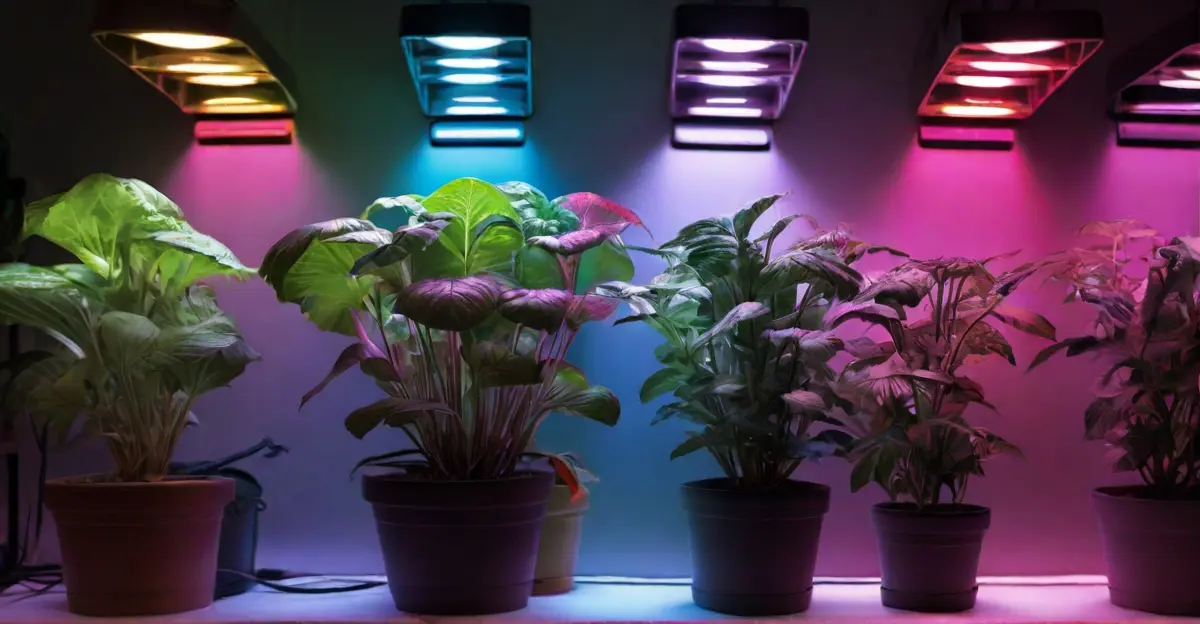
When it comes to providing plants with the light they need for optimal growth and development, there are some key differences between LED and traditional HPS fixtures.
Let’s break it down!
The most basic difference is that LEDs allow you to fully customize and control the wavelengths of light emitted to precisely target the needs of your crops.
With HPS systems, you’re stuck with a fixed broad spectrum centered on yellows and reds. No tuning allowed!
Now, why does the spectrum matter so much anyway?
It’s simple—different light wavelengths trigger different metabolic processes and growth responses in plants!
For example, blue and red wavelengths are awesome for photosynthesis and bulb formation. But supplementing with UV and far-red also has proven benefits:
And that’s just the start!
Researchers discover more spectrum-specific plant growth pathways all the time.
So, what’s the takeaway?
With LED systems, we can finally target these responses, maximizing the quality and potency of each harvest. Whereas HPS tech leaves this fine-tuning totally in the dark.
NOTE: Some level of spectral manipulation can be achieved with filters on HPS lights as well.
Energy Efficiency

On paper, LED fixtures are more electrically efficient, converting over 50% of energy into grow light versus just 35% efficiency for even the best HPS systems (source).
But does this higher LED efficiency actually translate into lower electricity costs for your farms after factoring in differences in usable light intensity?
Let’s crunch some numbers to find out!
Electricity Cost Comparison
Based on commercial farm lighting simulations and meter readings, producing equivalent yields under:
Versus:
That’s a hefty 67% less electricity used overall with LED lighting (4.1 kWh daily savings per fixture), despite lower watts per fixture.
For a 10,000 sq ft (9.29 a) indoor farm running approx 200 lights for 12 hours daily, we can calculate:
Compared to:
That’s an annual savings of $29,920 changing over to LED tech—over 20% savings on lighting costs for most indoor farms.
Impacts on Yield
Now for the main concern—if I switch over to LED systems, what happens to my yields and profits?
The truth is, when using optimized fixtures providing equivalent Daily Light Integral (DLI) or PPFD levels to existing HPS setups, most research shows matched yields between technologies.
Plants mainly respond to total light energy input rather than the spectrum source (within limits).
NOTE: Spectrum affects quality and secondary metabolites.
The exception is some increased terpenoid/flavonoid production under certain spectra (especially blue light) that may increase quality.
KEY TAKEAWAY: Optimized LED grow lights absolutely deliver better electrical efficiency, resulting in major potential energy and financial savings year over year without sacrificing yields for most indoor farms. Energy savings range from 20% to over 90% in some cases.
Heat Output and Temperature Management
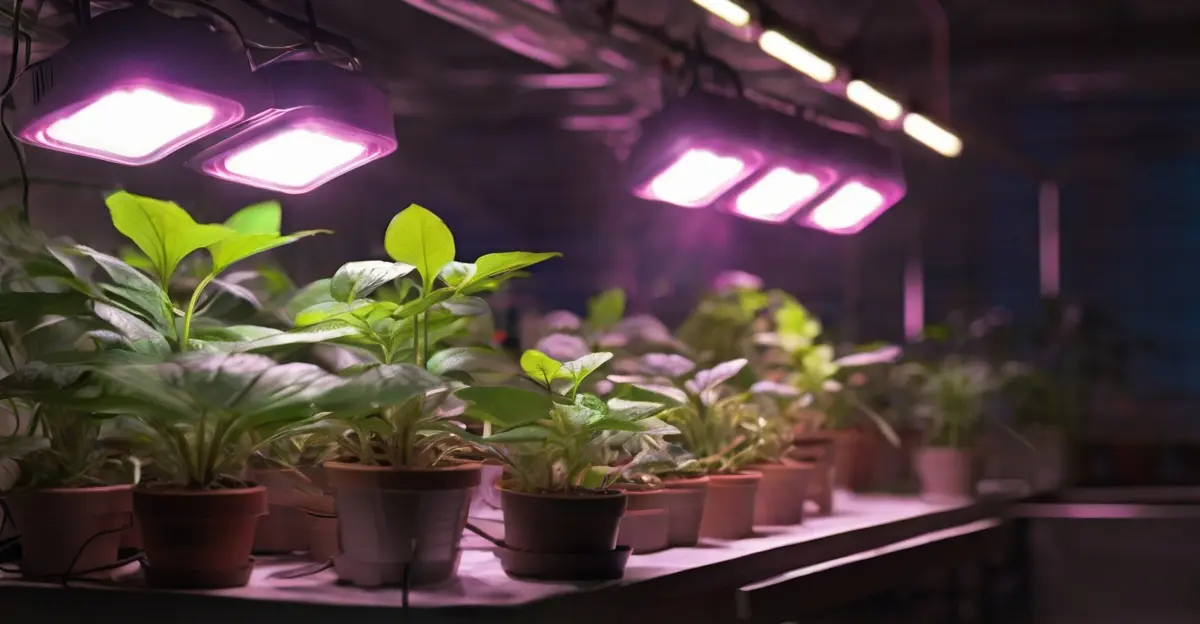
When it comes to heat output and impacts on the growing environment, HPS and LED lights differ dramatically.
Let’s explore how!
Much Cooler Operation
LED fixtures run far cooler than traditional HPS bulbs—producing just 25-30% as much heat for the equivalent light output.
How?
Well over 70-90% of energy pumped into HPS bulbs is converted into heat, with only 10-30% converted into visible light (source).
Quite inefficient!
Whereas LEDs focus energy into specific wavelengths, minimizing waste heat.
Ventilation and Cooling Needs
The intense heat from HPS requires tons of AC and ventilation to maintain optimum growing conditions.
LED’s cooler operation slashes cooling costs by up to 40%.
SIDENOTE: Watch humidity levels, as cooler leaf temperatures may demand extra dehumidification (depending on the climate conditions).
Radiant Heat Production
See that intense red glow bombarding from HPS bulbs?
Most of that is infrared heat radiation, heating any surface it contacts. Like tender young leaves!
HPS radiant heat can scorch leaves if fixtures are positioned too low.
Whereas, LEDs produce negligible radiant heat, allowing positioning closer to the plant canopy than HPS grow lights.
IMPORTANT: LEDs still produce SOME radiant heat that needs to be properly managed. LED grow lights must be cooled to maintain high efficiency and prevent overheating.
Interestingly, while less hot air is blasted out, leaf temps under LED average 1-3 °C lower than HPS.
One last perk of HPS heat—free supplemental warming for your grow room! Handy for cold regions.
KEY TAKEAWAY: HPS wastes most energy heating empty air. LEDs target light where it’s needed—your crops.
Lifespan and Maintenance
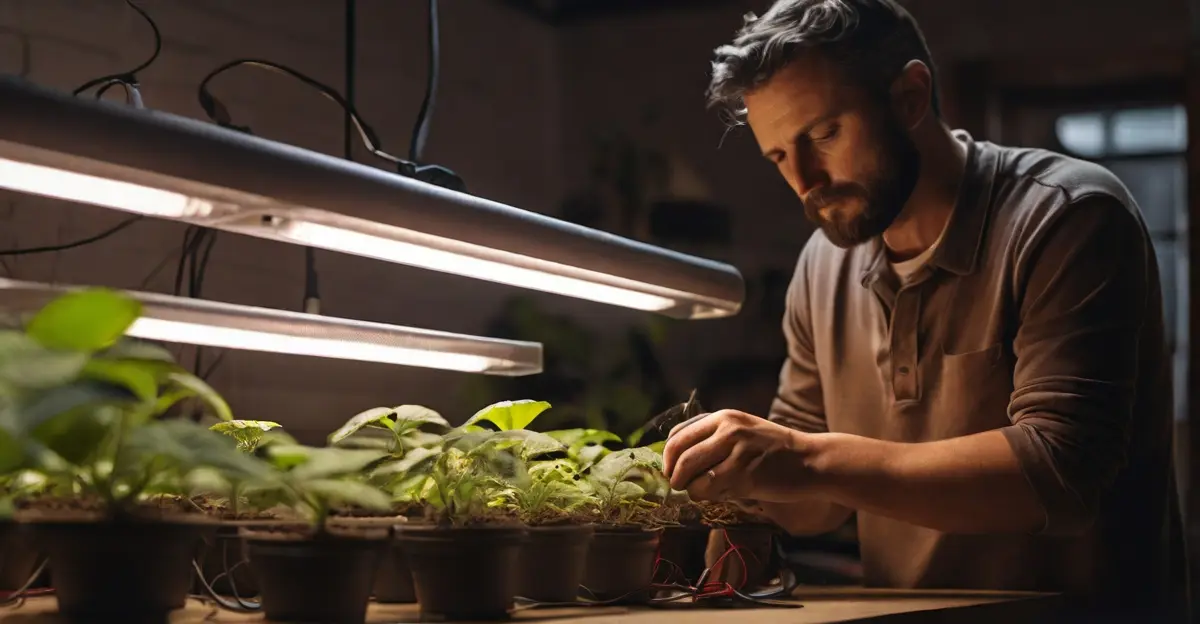
When comparing lifespans between LED and traditional HPS grow lights, there’s no contest – LED fixtures far outlast old-school HPS bulbs.
But what does this longer lifespan actually mean for your indoor farm in terms of dollars and cents?
Glad you asked! Let’s explore.
Lifespan Comparison
On average, a quality LED grow light lasts 50,000 to 100,000 hours in operation – up to 10 times longer than HPS bulbs rating just 10,000-20,000 hour lifespans.
So while HPS bulbs lose efficiency after 12–18 months, requiring replacement, the same LED fixture would keep performing reliably for over a decade before needing a swap out!
LED Maintenance Best Practices
While LED fixtures themselves are reliable, maintaining optimum performance relies on proper care.
HPS Maintenance Requirements
To keep traditional HPS fixtures operating smoothly and safely, do more frequent maintenance like:
As you can see, HPS systems demand much closer monitoring and part swapping to deliver consistent harvests long term.
To summarize the financial aspect:
Over a 10-year timeframe, the cost savings on fewer replacements alone from using LED lighting instead of HPS can likely amount to tens of thousands of dollars for a small to moderately-sized grow operation (source).
For large commercial facilities running thousands of fixtures, the long-term savings on parts and labor could exceed $1 million when factored over the extended LED lifespan (source).
So while LED grow lights carry higher upfront price tags, the total cost of ownership over their lifespan is actually far lower thanks to dramatically fewer replacements required.
That’s why more and more indoor farms are switching over to LED lighting every harvest. The savings stack up thanks to exceptional LED longevity!
Lighting Manipulation and Control
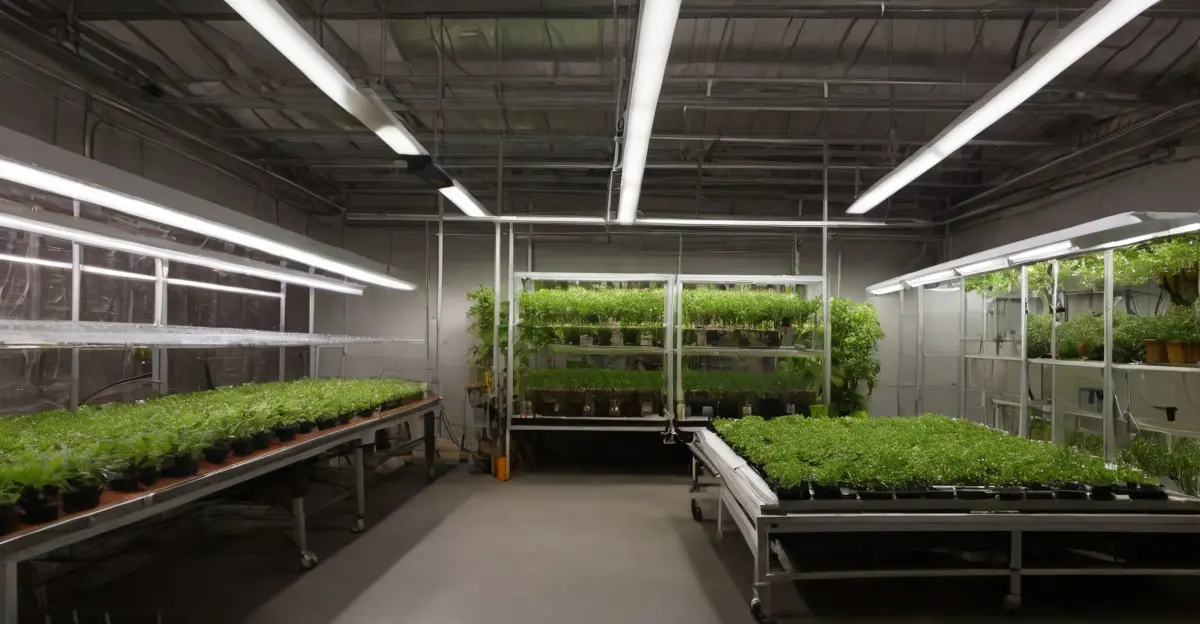
One major benefit of LED grow lights is the ability to fully control the wavelengths of light your plants receive.
By mixing different color LEDs, you can create customized “light recipes” tailored to each stage of plant growth.
For example, boosting blue light early on triggers more vegetative leaf growth, while spiking red light later triggers flowering and fruiting.
Unfortunately, HPS lights emit a fixed spectrum (mostly yellow and red) lacking in key wavelengths like blue and UV.
The only adjustability comes from adding supplementary lighting, like energy-hungry metal halides.
Precise Light Intensity Manipulation
Another advantage of LED grow lights is precisely controlling light intensity.
Using a technology called PWM (pulse width modulation), LED chips can be dimmed from 100% down to just a few % intensity.
This allows matching intensity to growth stage needs for optimized yields.
For example, lowering intensity during propagation, then maxing it out for fruiting and flowering.
Achieving this level of intensity control is simply not possible with on/off style HPS lighting.
Lighting Automation
This one’s simple but super practical – as electronic devices, LED grow lights connect directly to control systems for automated lighting schedules tuned to plant needs.
No more manually switching fixtures on and off!
Instead, clever software and sensors ramp intensity up and down optimally over the daily photoperiod.
Some systems even integrate weather data to supplement natural sunlight.
Safety Considerations
When installing any electrical system, safety should be the number one priority. No one wants damaged equipment or worse – fires or injuries.
So how do LED and traditional HPS grow lights compare when it comes to operational safety?
Modern LED grow lights lower risks in three crucial areas compared to old HPS tech:
1. Fire Hazards
LED fixtures emit far less heat than HPS bulbs. This significantly cuts fire risks.
SIDENOTE: 40°C (LED) and 300°C (HPS) temperatures are approximate or typical values.
LEDs also have built-in overheat protection that safely shuts down the light before overheating occurs.
For example, cutting-edge LED grow lights from SpiderFarmer have thermal management plus multiple other fire prevention technologies built right in.
2. Much Safer Electrical Design
Thanks to higher efficiency, LED grow lights max out high-capacity electrical circuits less often, reducing tripped breakers and potential shorts.
For example, replacing a 1000W HPS system with a 600W LED kit cuts energy usage by 40%, despite equal light output.
LED drivers also allow pairing with surge protectors to guard against electrical damage from power fluctuations.
3. Water and Humidity Protection
With non-vented casings and sealed waterproof electronics, quality LED grow lights safely operate in extremely humid grow room environments up to 100% RH (Relative Humidity).
Whereas HPS fixtures demand vented hoods to stop moisture damaging electrics or shattering hot bulbs.
Specialized LED grow lights even achieve IP65 or IP67 waterproof ratings for protection against both humidity and direct splashing or rainfall exposure (source).
KEY TAKEAWAY: LED offers safety advantages over HPS. This makes LED grow lights the wise, lower-risk lighting choice for most indoor gardening applications.
Initial and Operating Costs
When weighing upfront expenses, HPS fixtures are cheaper upfront – a 600W HPS kit costs around $250, while an equivalent LED system runs $700+. But LED prices fall over 20% annually as tech improves (source).
So this gap is closing!
Now to operating costs…
Electricity usage is where LEDs shine – 40% less power for the same light output. For a small farm, that could mean potential $1000+ savings per year!
Bigger operations save way more, as discussed earlier.
LEDs produce less heat, cutting cooling bills by up to 40% too. HPS generates way more waste heat.
Then we have bulb lifespan – LEDs last up to 10X longer before replacements are needed. I’m talking 50,000 hours! This adds up to thousands in maintenance savings down the road.
So while LEDs cost more initially, electricity and other savings can repay that within 1-3 years.
Optimized LED recipes keep adding value long term.
Conclusion and Next Steps
So which is better for powering your indoor farm?
Based on your specific growing goals, space, and budget – here is my take:
For commercial farms prioritizing the lowest operating costs, electricity usage, and automation, optimized high-end LED systems are likely the best fit.
The electricity savings alone could repay the initial LED investment in under 3 years.
For home growers on a budget, basic HPS kits provide decent performance at a low entry price. Down the road, you can upgrade piecemeal to LEDs as budgets allow.
For all gardeners wanting ultimate control over light quality, intensity, and timing – LED grow lights enable customization and precision unmatched by dated HPS tech.
FURTHER READING: How to Use a Grow Light for Indoor Plants: No-Nonsense Guide
Meet your guide
Dhruvir Zala